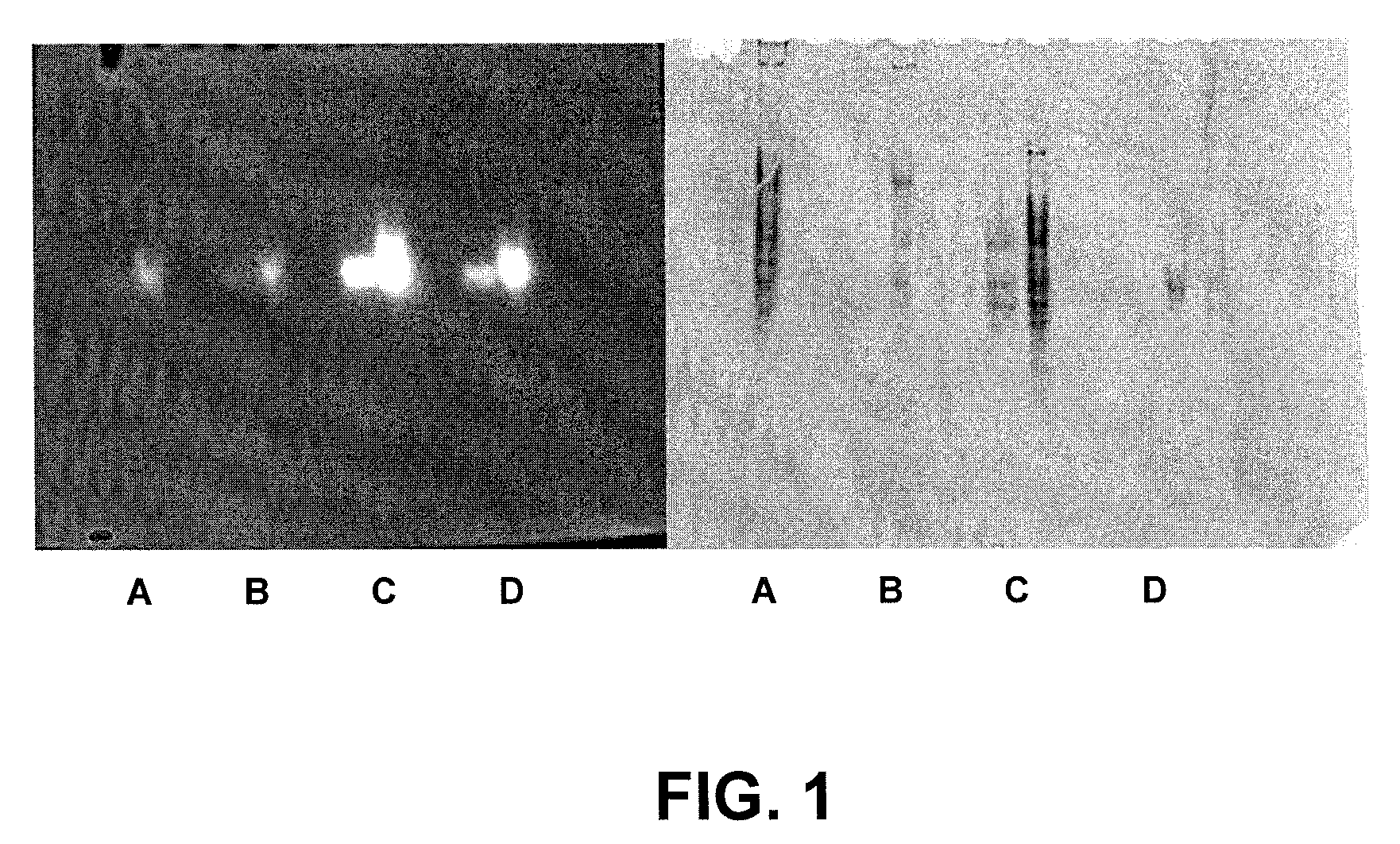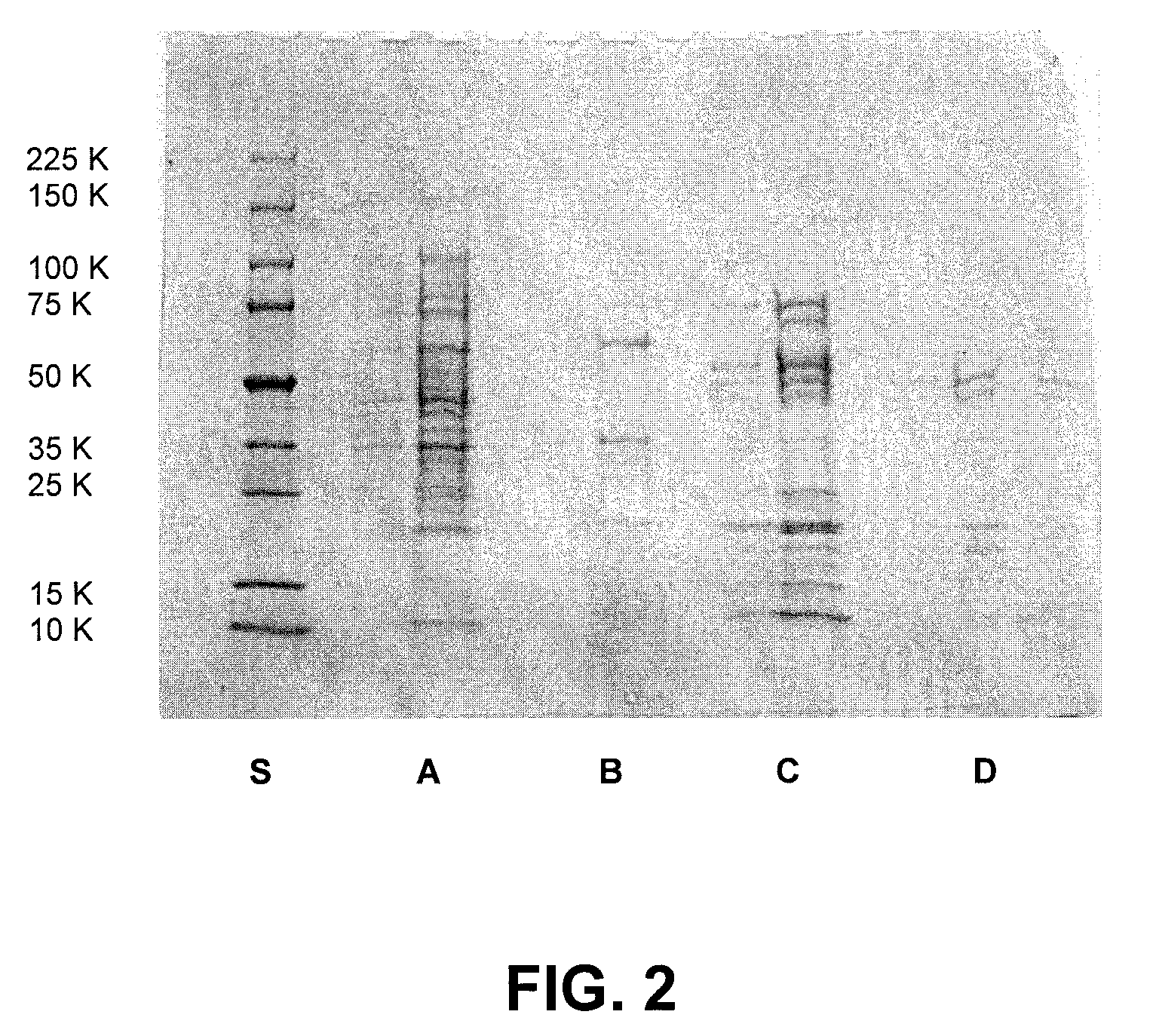Thermostable cellulase and methods of use
a cellulase and cellulase technology, applied in the field of thermostable cellulase and methods of use, can solve the problems of unsuitable for use with other enzymes, inability to obtain thermostable cellulase for extended periods, and inability to use enzyme products
- Summary
- Abstract
- Description
- Claims
- Application Information
AI Technical Summary
Problems solved by technology
Method used
Image
Examples
example 1
Materials and Methods
[0033]Clostridium thermocellum cultures were a kind gift of Dr. Paul Weimer, USDA Agricultural Research Service, U.S. Dairy Forage Research Center, University of Wisconsin, Madison, Wis. For generation of DNA libraries, cultures were concentrated by centrifugation. The cell concentrate was lysed using a combination of SDS and proteinase K, and genomic DNA was purified using phenol / chloroform extraction. The genomic DNA was precipitated, treated with RNase to remove residual contaminating RNA, and fragmented by hydrodynamic shearing (HydroShear apparatus, GeneMachines, San Carlos, Calif.) to generate fragments of 2-4 kb. The fragments were purified on an agarose gel, end-repaired, and ligated into pEZSeq, a lac promoter vector (Lucigen, Middleton, Wis.).
[0034]To express putative cellulases, the C. thermocellum library was transformed into electrocompetent E. coli cells (Lucigen). Individual colonies were picked and grown in 96 well blocks. Aliquots of the culture...
example 2
Identification of Cth10H6
[0036]During screening of the Clostridium thermocellum DNA library for cellulytic activity, a previously undescribed endoglucanase, designated Cth10H6, was discovered. Extracts of a 10-ml culture of the clone were used to characterize the cloned enzyme, which showed strong activity on an insoluble beta-glucan substrate (AZCL-barley-beta-glucan, Megazyme), and shows some activity against dye-linked cellulose substrates and 4-methylumbelliferyl-β-D-cellobioside, a soluble cellulase substrate.
[0037]Sequencing of the ends of the DNA insert allowed identification of the gene product within the C. thermocellum genome. The gene encodes a putative 57 kDa protein, having the predicted sequence shown in SEQ ID NO: 1. SEQ ID NO: 1 represents the full-length functional Cth10H6 protein without the leader sequence which is cleaved in vivo. The full-length Cth10H6 translation product including the 32 amino acid leader sequence is shown in SEQ ID NO: 5. The coding sequence ...
example 3
Cloning of Cth10H6
[0038]Using 50 nanograms of template plasmid DNA, the cellulase gene was amplified using the expression primers CTH10H6 L: CCGAACAATGACGACTGGCTGCATG TTGAAGGT (SEQ ID NO: 3) and CTH10H6 R: TCTTCTCTGCGGCCGCTTATATT GGTATTTTAAGCACTTTCCTCT (SEQ ID NO: 4). The N-terminal primer was designed to begin at the consensus signal-sequence cleavage site, between amino acids 32 and 33 of the full-length translation product of Cth10H6. The amplified PCR product was digested with Not1 enzyme to produce a Not1 blunt-ended fragment and cloned into the pTACST3 NotI blunt vector (Lucigen). The ligated product was then transformed into 10G F′ competent cells (Lucigen) and the transformed clones were selected on kanamycin plates. The pTACST3 NotI blunt vector introduced a nine-amino acid, MTQDPSRVG (SEQ ID NO: 7) affinity tag at the N terminus. Cloning was also done in PET vectors to determine the impact of the affinity tag on activity of Cth10H6. The affinity tag was found to not impact...
PUM
| Property | Measurement | Unit |
|---|---|---|
| temperature | aaaaa | aaaaa |
| temperature | aaaaa | aaaaa |
| temperatures | aaaaa | aaaaa |
Abstract
Description
Claims
Application Information
 Login to View More
Login to View More - R&D
- Intellectual Property
- Life Sciences
- Materials
- Tech Scout
- Unparalleled Data Quality
- Higher Quality Content
- 60% Fewer Hallucinations
Browse by: Latest US Patents, China's latest patents, Technical Efficacy Thesaurus, Application Domain, Technology Topic, Popular Technical Reports.
© 2025 PatSnap. All rights reserved.Legal|Privacy policy|Modern Slavery Act Transparency Statement|Sitemap|About US| Contact US: help@patsnap.com


